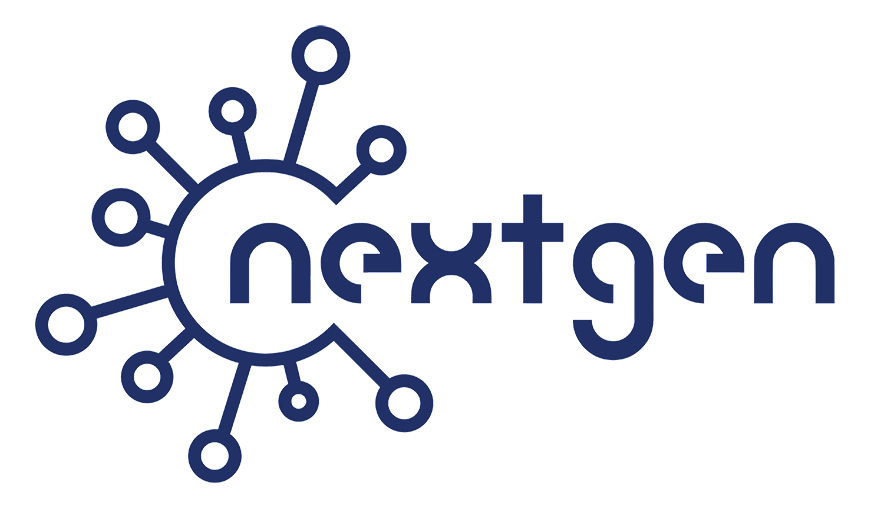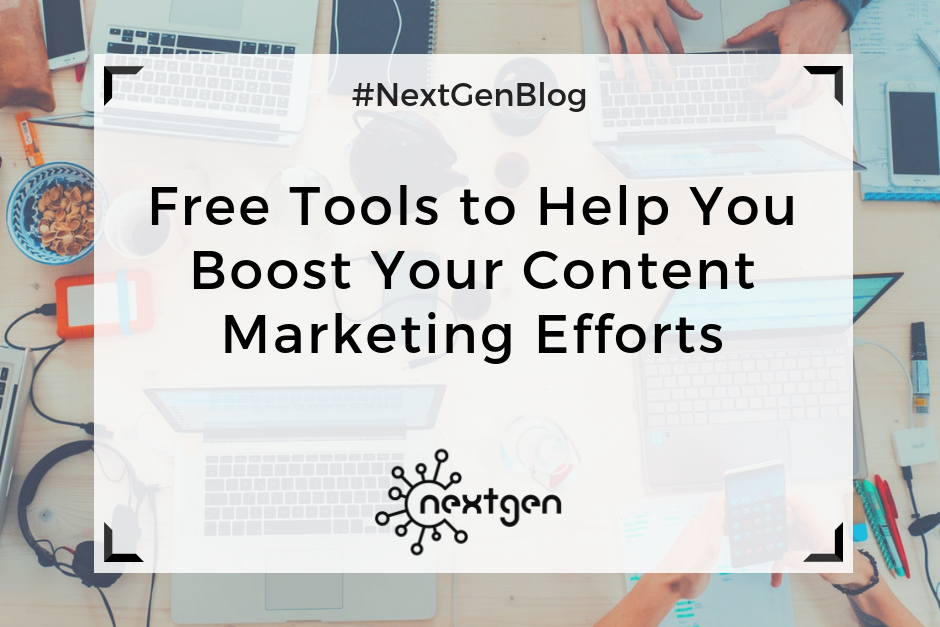
by Sofi | Dec 29, 2017 | Digital Marketing Tools
As you get started, publishing insightful and enjoyable content you’ll rapidly discover a variety of ways to improve research, produce material and allocate content on social media. Listed below are free tools that will help you achieve word-perfect writing:
#1 Thesaurus.com
Creating a captivating and fascinating reading experience is essential in a world full of content clutter. To keep away from replication, and to keep people interested, make sure dull language isn’t tainting the reader experience by sprinkling in different words. You can use Thesaurus.com to add more style and grace to your content.
#2 AdWords Keyword Planner
As a content marketer, you should continuously conduct research regarding keywords that can give your website a boost. AdWords permits you to rent ad space at the top of search results on a pay-per-click basis, whereby you select the keywords you want your ad to appear for. The more searches you run, the more you’ll comprehend in what way the tool works. Also, numerous searches give you a better impression of which keywords best suit your site.
#3 Google Trends
Google trends is the ideal way to produce new ideas for your blog and other content marketing opportunities. Although, the search engine giant’s Keyword Planner can offer you various keywords related to your business, you need an additional method to perform keyword research to discover relevant topics and see what’s trending.
#4 SiteLiner
SiteLiner is an important tool because it can detect duplicate content which can damage your SEO. Therefore, it’s essential that each of your web pages is unlike any other web page. Search engines return only to the resources that add the most value and having identical content causes confusion. In other words, it suggests that you’re likely to be filtered out of results. SiteLiner is a phenomenal tool for rapidly checking your site. The app is capable of scanning 250 web pages, free of charge, and it can detect broken links as well as help you eliminate roadblocks that can damage the user experience.
#5 SERP Preview
It is imperative that your blog posts and site pages are optimized for the SERPs (Search Engine Results Pages). Portent’s SERP Preview tool allows you to see how your web pages will be shown in Google search results. This tool conveniently allows you to improve your URLs, Page Titles, and Meta Descriptions that contribute to a better understanding of your content performance and higher rankings.
#6 CoSchedule’s Headline Analyzer
Writing great headline is significant to attracting attention and encouraging click-throughs, and CoSchedule’s ‘Headline Analyzer’ is a unique tool that analyzes and displays the strength of your blog post title.
#7 Answer The Public
Answer The Public enables you to input keywords applicable to your line of business, which it then uses to show groups of connected search queries that people are actively typing into Google. This is valuable for keyword research, as you want to be writing about the things that matter the most to your audience.
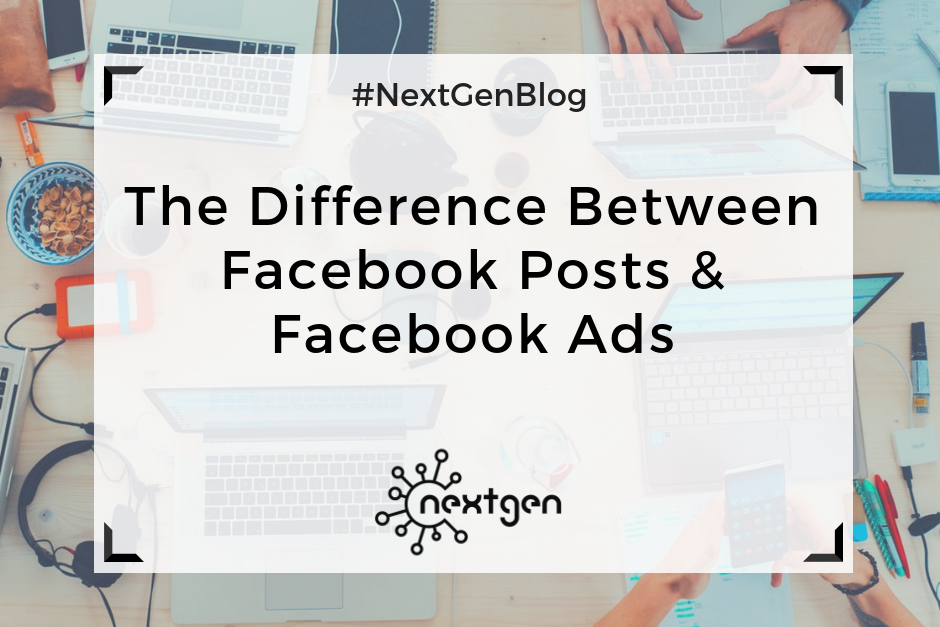
by Sofi | Dec 15, 2017 | Social Media Marketing
If you want to advertise on Facebook, you can essentially choose between two advertising methods: boosting your posts, or creating Facebook ads. Many people can’t tell the difference between the two, and are often confused when they need to choose which option to use. So, let’s explain each method to help you understand the difference.
Boosted Posts
By allocating a portion of your advertising budget you can boost a post that you already posted on your page. A regular post on its own usually reaches only a small portion of your audience. On the other hand, boosting a post means that more people will see it. You can boost status updates, photos, videos, and offers from your business page, and they will appear higher in the News Feed of your targeted audience.
You can build your audience based on “people you choose through targeting” (interests, demographics, behaviors), “people who like your page”, or “people who like your page and their friends”. By boosting a post, you can increase audience engagement, such as likes, comments, and shares, and therefore increase brand awareness.
You can boost a post directly from the blue “Boost” button that appears in the right-hand corner of your posts, or you can do it from the Facebook Ad Manager. The boosted posts appear as “Sponsored” posts in the News Feed.
Facebook Ads
To create Facebook ads, you need to have a Facebook Ad account. Unlike boosting a post, when you create a Facebook ad, you have more advanced targeting, formatting, and analytics options.
Depending on your goal, you can choose from different ad objectives:
- awareness (brand awareness, local awareness, reach)
- consideration (traffic, engagement, app installs, video views, lead generation)
- conversion (conversions, product catalogue sales, store visits)
When setting up the campaign, you can use advanced targeting options, such as:
- demographics (location, age, gender, languages, etc.)
- interests (business and industry, entertainment, family and relationships, hobbies and activities, etc.)
- behaviors (business-to-business, job role, expats, travel, media, etc.)
- connections (people who liked your page, people who used your app, people who are going to your event, etc.)
- remarketing (people who visited your website, custom lists of emails, custom lists of phone numbers, or custom lists of Facebook user ID-s)
After determining your audience, you can add budget, creative (an image or video that people will see), and messaging. When creating ads, you also have the option to use call to action buttons, such as “Like our page”, “Shop now”, “Get directions”, and others. Facebook ads also appear as “Sponsored” posts in the News Feed.
***
Whether you decide to use a Facebook ad, or boost your organic posts, depends on your overall goals. If you want to increase post likes and comments, then you should go with boosted posts. If you want to generate leads or drive traffic to your website, then you should go with Facebook ads. Determine what you want to achieve, and choose the appropriate advertising method.
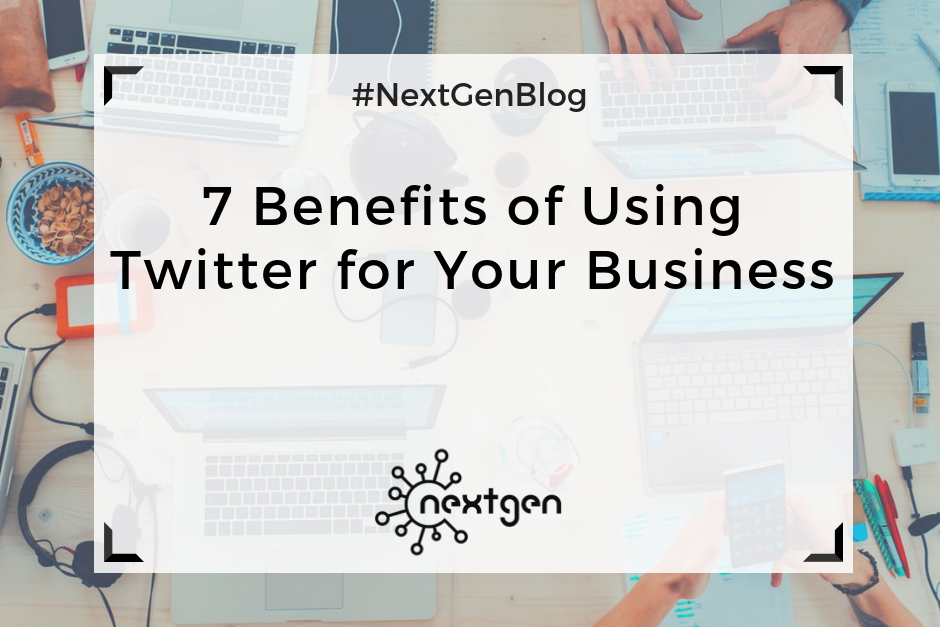
by Sofi | Dec 8, 2017 | Social Media Marketing
Twitter was found in 2006, and has stood the test of time, becoming one of the most popular social media networks in existence. As of the third quarter of 2017 the network had about 330 million active users, according to Statista.
Twitter has also become a popular social media marketing tool among companies, which use it to promote and grow their businesses. However, there are many that haven’t jumped on the Twitter bandwagon, and still hesitate to use it. So, we made a list of seven important benefits of using Twitter for your business.
#1 Cost-effectiveness
There are no costs for joining Twitter. Creating an account on the platform and tweeting are free of charge. You only need to have a computer, tablet, or smartphone, and an internet connection.
#2 Reaching wide audience
As mentioned above, Twitter is one of the most used social media networks right now, with millions of active users. All kinds of people and institutions use it, including celebrities, politicians, corporations, etc. This means that you can easily reach large and diverse audiences by posting relevant content.
#3 Increasing brand awareness
You can increase awareness for your business on Twitter, by focusing on tweeting great content. Great content has a big chance of getting retweeted, meaning more people will see it, and those people can become your new followers. If your followers like your content, they can later become your customers.
#4 Boosting SEO and driving website traffic
Tweets appear in Google searches, so use appropriate keywords and tweet about topics you want to rank for. Maximize the reach of your tweets to get more traffic to your website. Make sure you include an URL to your website in the website field or your profile’s bio. Determine the optimal times of day for tweeting, and use hashtags to increase engagement. You can also create Twitter Ads campaigns and boost your tweets.
#5 Getting feedback
Tweeting is a great way to interact with customers, keep them updated about news for your business, and ask them for opinions on your products. People are usually happy to share their thoughts online, so you can use that information to improve your products and increase customer satisfaction.
#6 Following trends
By searching and following Twitter trends, you can find out what topics are Twitter users interested in at the moment, read about current trends in your industry, and even find out what people are saying about your brand. You can conveniently get real-time information about hot topics and trends, at any time.
#7 Keeping eye on the competition
If your competitors are on Twitter, then you have a chance to watch closely what they do. It’s good to occasionally check what they’re up to, because being aware of what your competition is doing can help you make better decisions for your business, and plan your marketing efforts accordingly.
***
Twitter community is constantly growing, and it’s slowly but surely becoming a must-have marketing tool for almost any kind of business.
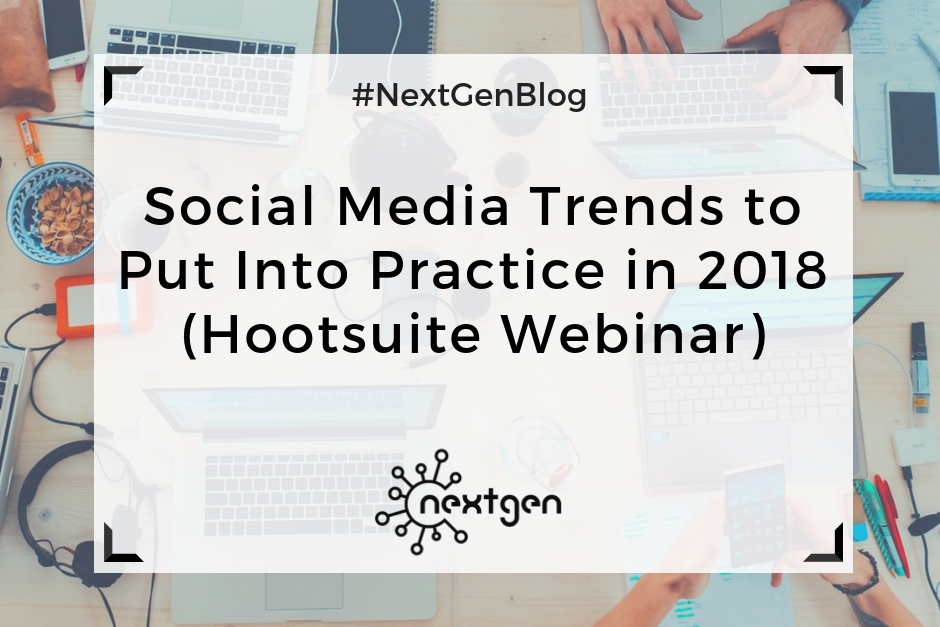
by Sofi | Dec 1, 2017 | Social Media Marketing
As 2017 is coming to an end, marketers are getting ready for the upcoming year. They predict new trends, and prepare new strategies. I recently listened to Hootsuite’s Webinar on social media trends for 2018, so I’ll share with you the key takeaways to help you prepare your social media strategies effectively and on time.
I. Where social media networks are headed
Social media networks are constantly evolving, and they will offer new opportunities for businesses next year.
Facebook – Facebook is pushing three important features for 2018: mobile video; messenger ads to encourage businesses to communicate more with their customers; and FB groups as a way for brands to engage with their audiences, and people to engage with content outside of the crowded newsfeed.
YouTube – YouTube will focus more on high-quality content in the future. It will become the go-to platform for mobile streaming, and it will grow into a platform for live streaming and social tv content.
Instagram – Instagram is growing fast and brands are seeing organic and peer-to-peer success on this network. They are introducing a lot of new advertising features, such as links in ads and stories which you can add to your e-commerce or website.
Twitter – Twitter has now a lot of video and personalized recommendations, direct response ad formats, and a particularly important feature is in-stream video ads. Twitter is partnering with some big media brands, and that can help you reach broad audiences.
LinkedIn – LinkedIn will have more CRM integrations with Microsoft cloud products, which will be key for B2B businesses. They want to become the number 1 platform where professionals consume content, so they are introducing many social features, such as video creation tool, messenger features, Snapchat geofilters for events and conferences, etc.
II. Three key challenges for organizations in 2018
Organizations will face three key challenges in the upcoming year:
- To find solution for declining organic reach
- To keep pace with algorithmic shifts and social network innovation
- Proving the ROI of existing strategies, before moving to new innovation
III. Global social behaviors
- Social dominates time spent on mobile – Every 1 in 3 minutes spent on mobile is spent inside a social app. As consumers spent more time on social networks, new types of behaviors increase.
- Passive social behaviors continue to climb – Users primarily use social media to find entertainment, to access the news, and fill their spare time. There is more engagement on specialized social media platforms.
- Consumers integrate social deeper into their purchase journeys – 28% of global internet users use social network for online product research. This sets the stage for social commerce and more functional uses of social media.
IV. Five social media trends for 2018
These are the social media trends Hootsuite shared for next year, and practical ways for you to put them into action.
Trend 1: The evolution of social ROI
Marketers that are not being able to prove ROI find it difficult to be successful on social media, to win executive support, or get budget for new innovations. The problem is that while data is easy to collect, it’s hard to tie to business outcomes. Three shifts to ROI measurement need to be made: measuring beyond content performance metrics; measuring the activity with customer journey stages; and CMOs helping in identifying the business objectives for social.
Hootsuite recommendations: invest first in what you can measure; nail the basics with UTM codes; follow Hootsuite’s ROI framework; and map your metrics to the customer journey.
Trend 2: Mobile fuels the growth of social TV
Social video is on the rise, and social networks are shifting more toward broadcast style content and metrics. It’s also estimated that Internet advertising spend will outpace traditional TV spend. The main social TV opportunities for companies include: extending traditional TV content to mobile audiences; creating new partnerships with micro influencers and community engagement with groups; and launching products with live podcasts and innovating with Facebook’s Live API.
Hootsuite recommendations: include social video as a tactic in your strategy; combine SEO and Facebook Live; partner with Watch Tab influencers; and consider shifting budgets back to Facebook video ads.
Trend 3: Trust declines, while peer influence rises
People lack faith in the old institutions that include government, media, business, and NGOs, and they turn to people they know and trust. Peers have become more relevant than any other source of information. Marketers are also becoming skeptical about mega influencers and celebrity endorsements, and they are too valuing peer-to-peer recommendations and genuine endorsements from people close to the brand or the product. So, 2018 will reward businesses that put people at the center of their marketing strategy.
Hootsuite recommendation: think beyond reach and traffic and focus on creating customer and employee advocacy; build advocate communities with FB groups; use micro and macro influencers; and go unscripted on Facebook Live.
Trend 4: Humans, meet AI
There is an interest and adoption of AI by some innovative companies, and there will be more adoption and practical applications of AI in 2018. However, brands need to make sure that their AI strategies are human, helpful, and relevant. AI use cases for social marketing include: humans and bots helping customers together to elevate customer care; messaging apps will become much more personalized content channels; and AI will provide faster time to insights with predictive analysis.
Hootsuite recommendations: you can get your own report robot, like Quill Engage Google Analytics tool, and build with a bot template, so you can find a solution partner that will augment your social media strategy with AI.
Trend 5: The promise and reality of social data
Organizations are struggling with social data because of: lack of time and resources needed for social data projects; integration of social data with other tools; and culture and politics, because different departments have different agendas and data can be political.
Hootsuite recommendations: Marketers need to be comfortable making assumptions and pull out insights to make better decisions and guide new strategies. They can also combine social data with more traditional sources of customer insight, like market research.
***
It seems like 2018 will be an exciting year for social media, and now that you now what to expect, start creating appropriate social media strategies for your business.

